[The Egyptians] are religious excessively beyond all other men — Herodotus

The ancient Egyptians have a well-earned reputation for their migraine-inducingly complex cosmogony, but as much as we joke about their multitudinous pantheon, most people don’t realize just how extensive it really is. So, I thought this week we’d deep-dive into it and talk about ten (plus one) lesser-known Egyptian gods that I think everyone should have on their radar. Some because they’re an interesting window on ancient Egyptian thought, some because they’re exceptionally strange, and all of them because I want to branch out from this being solely a blog full of Khepri dunks.

10) Khenty-Khety
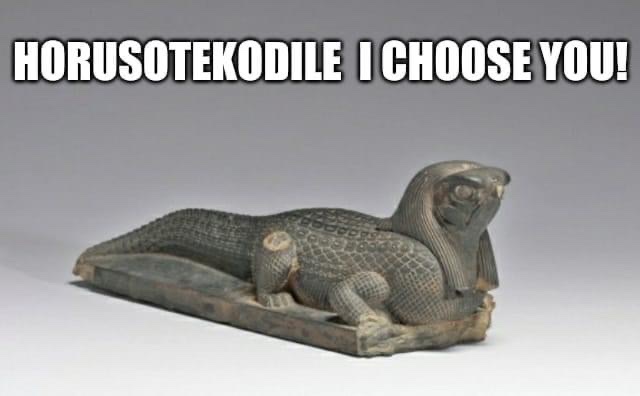
I’ll ease everyone into this by starting with a familiar god, if not a familiar face. Khenty-Khety is actually a form of the sun god Horus, assimilated from a localized crocodile deity of this name from Athribis (Egyptian: Hut-heryib), a city located roughly thirty minutes north of Cairo, in what would have been Lower Egypt during the pre-modern period. In fact, Athribis was also called Kem-wer, meaning “The Great Black One”, an epithet of Horus. Athribis was the capital of the tenth nome, or administrative district, of Lower Egypt, and Khenty-Khety might have been the guardian deity of the city, as several of the deities we’re going to talk about are. He was sometimes depicted as a falcon-headed man holding two eyes (representing the sun and moon), but often he was in the form here, a falcon-headed crocodile.

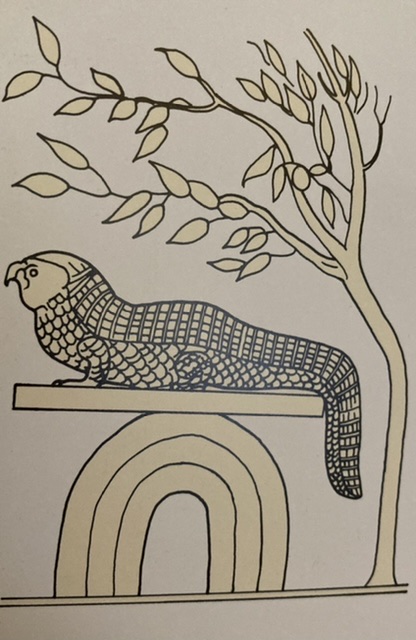
It’s certainly a weird mashup physically, but it does make some sense in practice. Athribis was deep in the fertile Nile delta, the Black Land its second name Kem-wer alludes to, a land full of the river’s massive crocodiles that were both to be feared and revered. It would make sense that a god chosen as the protective deity for the city would take the shape of the scariest animal its people could think of. Additionally, Horus, Lord of the Black Land (Lower Egypt) is always the protector of Egypt as part of the Kheniu, the Fighter Gods. This is one of the joint titles he shares with Set, the Lord of Red Land (Upper Egypt). Horus and Set are generally depicted as enemies in Egypt’s surviving myth cycles, but only when Set attempts to upset the balance (ma’at) of the universe by taking more than is his due. Together, they are a potent protective force— the Akhmui-Remthu, the Gods Who Weep Not.

9) Nefertem

Nefertem, whose name means “The Beautiful One Who Opens” (or Closes, depending on your translation), is the god of the Egyptians’ beloved blue Nile lotuses, who arose out the primordial waters at the beginning of the world. It is from Nefertem’s blossom that the sun (Ra) emerged and first brought light to the darkness. As the Book of Going Forth By Day tells us: “Rise like Nefertem from the blue water lily, to the nostrils of Ra, and come forth upon the horizon each day.” As bringer of day, Nefertem is depicted in his human form as a perpetually youthful man with a blue lily crowning his head. He is seen as the son of the creator-god Ptah and either Sekhmet or Baset, his traditional consorts, even though Sekhmet is usually held out to be the daughter of Ra, whom Nefertem brings into being.
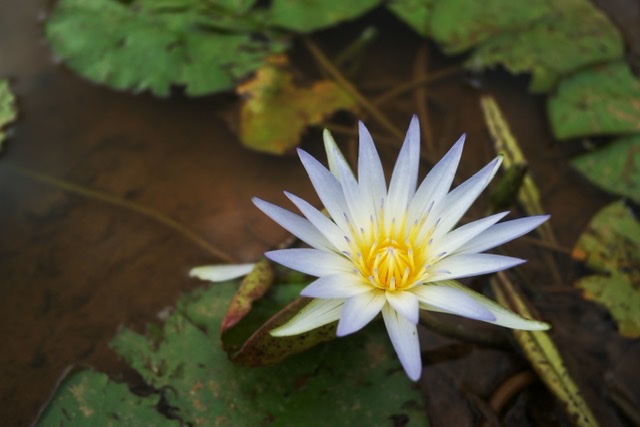
Though because he is the god of the blue lily’s heavenly scent, Nefertem is also the god of perfume, which we know was a major preoccupation of the Egyptians. But while this might make him sound like a frou-frou deity, as the son of Sekhmet, Nefertem was more often seen as a protective god, when he’d take a leonine form or ride a lion, armed with the sickled khepesh knife. Amulets often included Nefertem among other popular protectors like Bes and Baset, especially for children. In a world where miasma theory — that disease spread by bad, smelly air — was a legitimate medical treatise, it isn’t too far-fetched to imagine the god of perfume as a shielding influence.
8) Waset
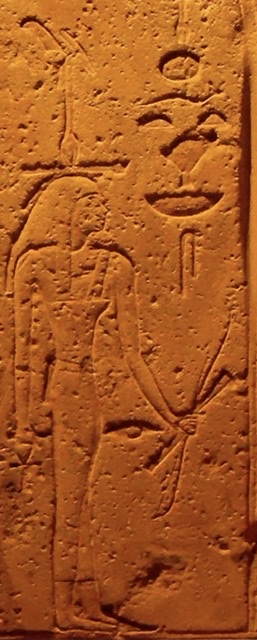
Waset (or Wosret), whose name means, “She the Powerful”, was the guardian goddess of the Egyptian city of Thebes, the great metropolis of arid Upper Egypt. In fact, her name is the Egyptian name of the city, so intertwined are the two with one another. Located past the bend in the Nile where far-flung Ombos sits, Thebes was the center of trade between Egypt and their southern neighbors like Nubia and the Arabian coast. This whole region had huge mineral deposits (Ombos’ Egyptian name was Nebut, literally the Egyptian word for “gold”, because of the huge gold mines located in its vicinity), which funded trade and the impressive temple complexes that Thebes was famous for.

Despite Thebes’ many temples and pilgrims, Waset was a minor goddess, as most city guardians are, and had little presence outside of her city— except for her unexpected appearance in the ruling names of three 12th Dynasty pharaohs. We’ve already met one of them (and his boat!) when we were feeling squeezed in the Walton Hall of Egypt two weeks ago. Senwosret III and his two predecessors’ names literally mean “Man of Wosret (Waset).” We don’t know everything about the backgrounds of the Senwosrets, but they seem to have had many connections to Upper Egypt, and that might explain their allegiance to such a parochial deity. Senwosret III’s mother and one of his wives were known by the name/title Khenemetneferhedjet, “united with the beautiful white crown,” the hedjet, which is the crown symbolic of Upper Egypt; and many of Senwosret’s accomplishments center in this part of the kingdom. He led several successful wars against Nubia, and created an early navigable canal through the first cataract in the Nile.
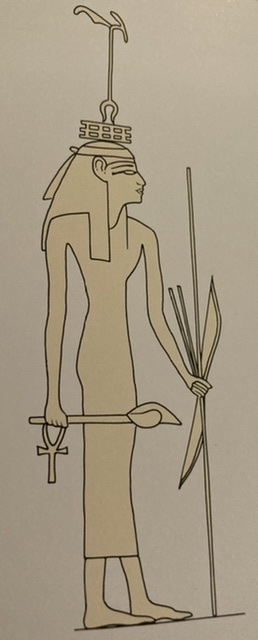
But as you can see above, rather than making their guardian goddess the nastiest animal they could think of like the citizens of Athribis, the Thebans elected instead to arm their girl to the teeth. Waset is usually depicted as she is here: a young woman crowned with a plumed was-scepter, clutching a bow, arrows, and an axe or club. Egyptologist John D. Ray calls Waset “the theological equivalent of the girl next door,” because she might have been Thebes’ patron god, Amun’s, first wife before he was joined with the mother goddess Mut. But really, there isn’t a whole lot of sugar and spice to be found in the demeanor of this Egyptian Terminator designed to scare off the kingdom’s enemies to the south.
7) Wenet
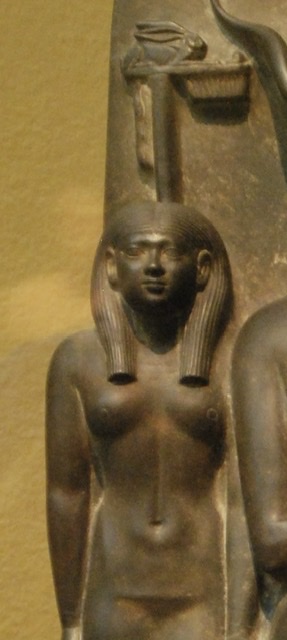
Wenet’s name means “She of Wenu,” Wenu being the Egyptian name of the city of Hermopolis; or “Hare,” both the animal itself and as the name of the fifteenth nome, where Hermopolis is located. During dynastic Egypt, Hermopolis was a small provincial capital, but it was a major cult center of the god Thoth. Thoth would later be associated by the Greeks with their god, Hermes, hence the Greek name of the city. Wenet was originally a snake goddess whose epithet was “The Swift One,” which may also explain why she eventually changed her form to coincide with her home nome and became a hare goddess.

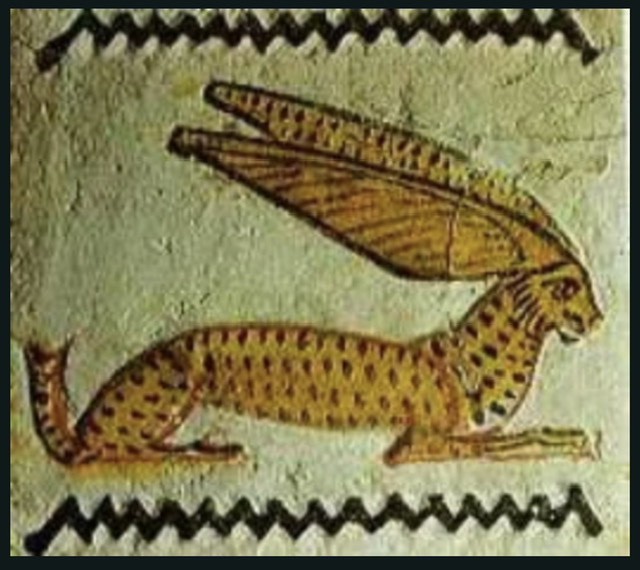
In human form, she appears as a woman wearing a standard over her head on which lies a desert hare. But she could also be shown as a hare, or a woman with a hare’s head. Like her city partner, Thoth, who as the god of magic could traverse the Duat, Wenet also has some chthonic affinities. While the Cape hare, which is the hare of Egypt, doesn’t burrow as rabbits do, it is primarily nocturnal and therefore connected to the night world of the Duat. And Wenet’s speedy epithet is well-earned: only the cheetah can outrun the Cape hare. Plutarch says the Egyptians praised the hare’s speed and keen senses, which may explain Wenet’s role as Hermopolis’ guardian, where she could be counted on to sense danger before her people could. This combined with clever Thoth’s inventive protection makes Hermopolis’ shield a brainier answer to Thebes and Waset’s brawn.

6) Gengen-Wer

Gengen-Wer is another primordial deity like Nefertem. The Egyptians believed that he carried the egg from which all life emerged, and it was his call that brought it forth. It’s this auditory salutation that gives the gods his name: gen means “honk,” and the onomatopoeic doubling is meant to convey a goose’s honking. Wer is “great” (masculine), so Gengen-Wer’s name is usually translated delightfully as “Great Honker.” He is also sometimes called Negeg, “Cackler,” another reference to the sounds of geese.
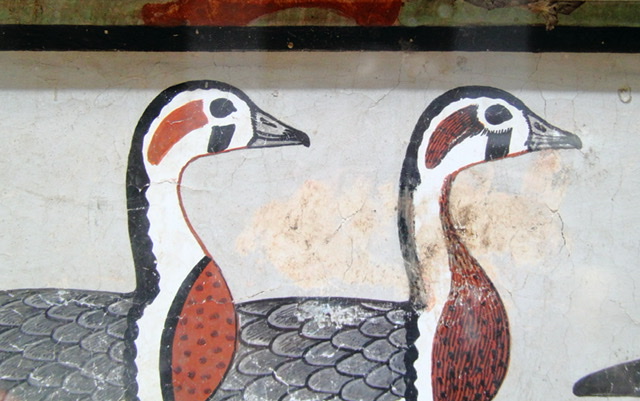
In addition to creation, (of course) Gengen-Wer also plays a role in the Duat, where the Book of Going Forth instructs the deceased how to guard, or sometimes, embody the goose god’s primeval egg. This seems strange until you consider that it’s not all that different from Christianity’s belief in being reborn through Christ; plus the Egyptians spoke of flying towards heaven as celestial geese, which is why geese are often found among tomb effects.
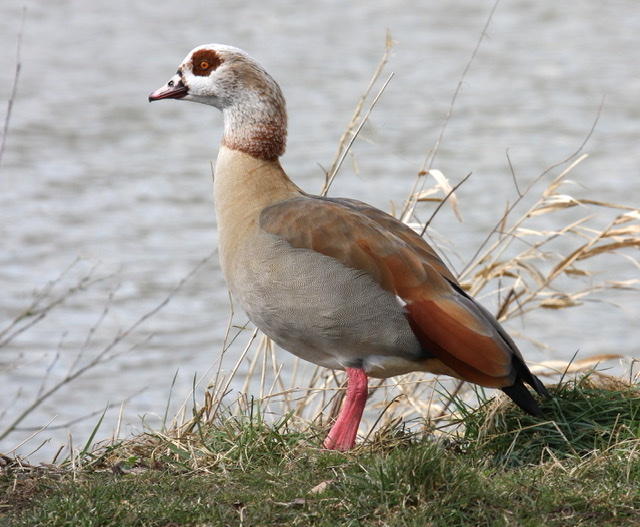
Gengen-Wer is likely supposed to be an Egyptian goose (Alopochen aegyptiaca), known for its attractive plumage and loud, raucous call— especially when it is nesting. Perfect for the god tasked with guarding the egg of life.
5) Henet

On a similarly avian note, Henet was a pelican goddess from the Old Kingdom whom the Pyramid Texts call the “mother of the king.” She was a protective deity who was said to prophesy the safe passage of the deceased into the Duat. This is how she mostly makes her appearance, in bird form on tomb walls and funerary texts. She also was seen as able to scoop up evil forces and agents in her beak pouch, shielding Egyptians from ill intent.

This is incredibly similar to the European fable that a mother pelican would wound herself with her beak and use her own blood to feed her young. In the language of the medieval bestiary, the self-sacrificing pelican represented Christ’s sacrifice of himself for humanity and the pelican’s blood as Christ’s in the Eucharist. As the mother of the English Church, the portrait of Elizabeth I below shows the monarch wearing a small pelican brooch on her breast, meant to denote her Christ-like sacrifice for the souls of her subjects. This in turn might open a window onto that enigmatic Pyramid Text epithet of Henet’s. Perhaps Henet was seen as a devoted pharaonic mother-figure to Egypt’s rulers, who caught the king’s enemies in her mouth and guided his ka into the afterlife.

4) Hatmehyt
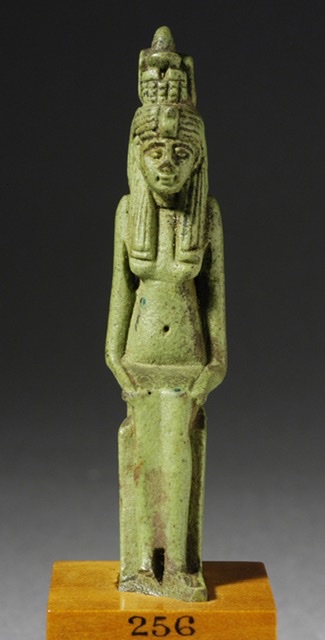
Hatmehyt’s name means “She Who is Before the Fishes,” which is appropriate because she is primarily associated with the Nile delta city of Mendes. This could signal that she is queen of aquatic life, or signal her as the primogenitor of fish, we’re not sure. But the latter certainly seems likely based on her lack of presence in any surviving myth cycles, which is common for the early primordial gods, as well as her presence in fertile Mendes, where she was the consort of the god of the city, Banebdjedet, which was the name the creator solar god Khnum was known by in Lower Egypt.
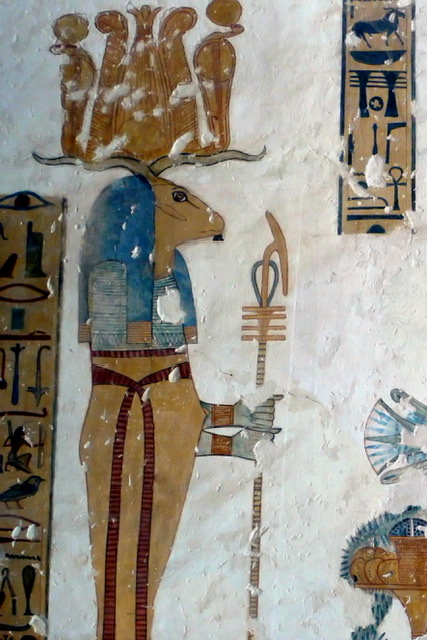
As we saw with Ptah-Sokar-Osiris, Ptah is often associated with Osiris and the resurrected afterlife, and this suits Hatmehyt as well, because Osiris is connected to fish as well. It is posited that this is why Hatmehyt’s cult didn’t extend beyond the delta, because of fish’s connection to Osiris, certain fish were tabooed in other parts of Egypt despite fish still being a part of the Egyptian diet.


Hatmehyt is usually shown by a hieroglyph of a fish, or as a woman with a standard on which a fish lay. For many years, it was believed this was supposed to be a dolphin, because of the animal’s dorsal fin. But it is far more likely that this is meant to be a representation of the extremely common African butter catfish (Scilbe mystus), which does have a dorsal fin. Catfish also have an underworld connection in Egyptian mythology, perhaps because of their bottom-feeding habitat deep beneath the surface of the river. A group of unidentified catfish deities guard one of the twelve caverns of the Duat alongside the god Aker.
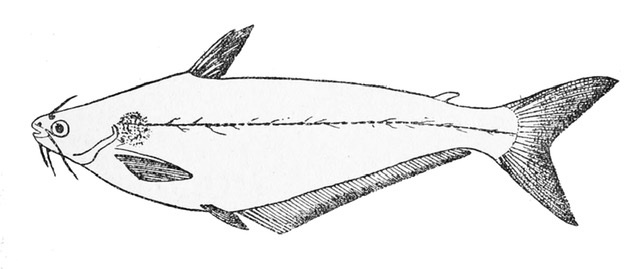
3) Sepa
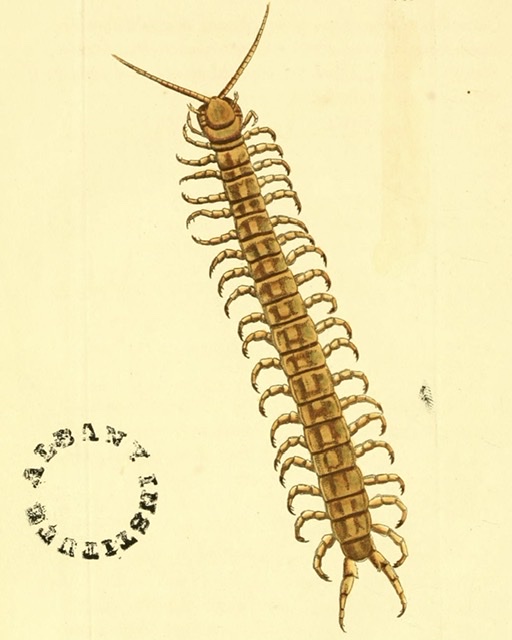
Sepa was a minor god associated with Horus and Osiris, especially in the city of Heliopolis (Egyptian: Iunu). Heliopolis’ name means “The Place of Pillars,” in reference to its many temples, especially the ones dedicated to Egypt’s primary Ennead, the nine gods of the sun god Ra’s family: Ra, Shu, Tefnut, Geb, Nut, Osiris, Isis, Set, and Nephthys (with Horus sometimes replacing Set, depending on the era and its attitude towards the Prince of Storms). Like we saw with Hermopolis, it was the dominance of Ra’s central temple, the Per-ʼAtāma (The House of Atum-Ra), that led Alexander to name it Heliopolis, the City of the Sun, when he conquered Egypt. However, even the name Per-Atama was a name for foreigners, for the Egyptians simply referred to the sun god’s temple as the Per-Aat, The Great House, because there was little question of whose temple was the greatest in Iunu.
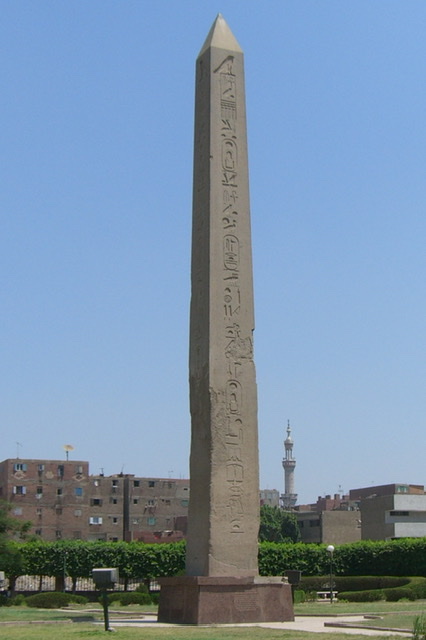
As the above picture suggests, Sepa’s most common form was as a centipede, indeed, he was often called the “Centipede of Horus.” But he was also absorbed into a dual deity with Osiris as Osiris-Sepa, who sometimes was depicted as a mummified donkey-headed god crowned with celestial horns. His personal cult was small, but he did have a yearly festival as sure as the much more central Ennead did.
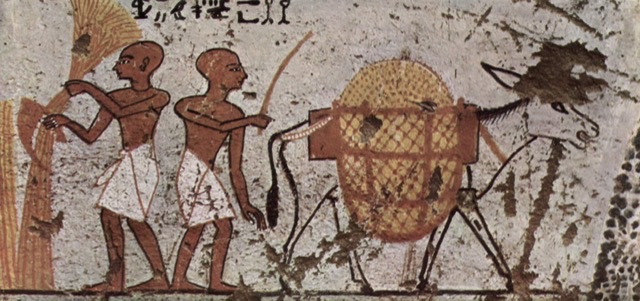
Now, a centipede god is not exactly a warm and fuzzy addition to a pantheon that gives us cat and bunny goddesses, but like the scorpion goddess Selket (Serket), Sepa was seen as a protective deity. He was praised for warding off snakebites, because like with the equally poisonous scorpion, sometimes you have to fight fire with fire.
2) Medjed
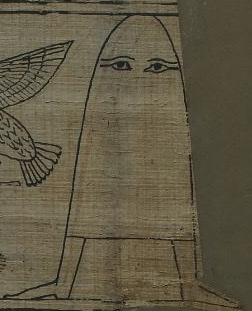
Okay, it’s finally time to address the tiny, sheet-wearing elephant in the room and talk about the truly bizarre Medjed. Medjed’s name means “The Smiter,” and he is mentioned in the Book of Going Forth as follows: “I know the being Medjed, who is among them in the House of Osiris, shooting rays of light from [his] eye, but who himself is unseen. He goeth round about heaven robed in the flame of his mouth, commanding Hapi, but remaining himself unseen.” That and two drawings from the so-called Greenfield Papyrus and the Theban Recension of the Book of the Dead Papyrus are literally all we know of Medjed.
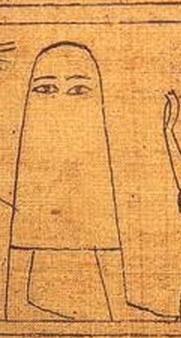
But, oh, what a pair of drawings they are. Medjed appears as a small creature in a drape that covers him completely (as the god who remains unseen), except for his feet and eyes (presumably the better to shoot his ocular laser beams). In short, he looks exactly like someone in a classic ghost costume, and predictably, the internet went nuts over this. Especially those connoisseurs of the bizarre and slightly unsettling, the Japanese.

This is in part because the Japanese cultural acceptance of yokai makes them perhaps uniquely attuned to a being like Medjed. Yokai are a class of supernatural beings in Japanese folklore; sometimes conflated with demons, but really, these spirits are more complex than that. The word “yokai” can be loosely translated as “strange apparition”; but the kanji characters involved are expectedly confused and contradictory, illustrating yokais’ unsettling aura, even when they are benign. The characters (妖怪) can be translated as attractive/calamity/bewitching/enchanting/ goblin/witch/devil/monster/phantom, and apparition/mystery/suspicious/odd/to blame. But as this deluge of at-odds descriptions suggests, yokai can inhabit a truly dizzying number of forms and behaviors; they can be malevolent or helpful, beautiful or grotesque, but “mischievous” is probably the most centering definition of them. And while the famously gorgeous kitsune, fox spirits who often took the form of beautiful women, are yokai, most yokai are strange in appearance. Just a cursory of Wikipedia’s article that lists yokai yields the Akateko (a red child’s hand that hangs out of trees to lure passerbys with the aid of a hypnotically attractive woman-spirit), the Konjaku Gazu Zoku Hyakki (a soul-sucking plant), and the Kameosa (a possessed sake jar). Part ghost stories and part urban legends, one starts to see how a small, sheeted god of destruction that can fly and shoot lasers from its eyes might fit right in. As a result, Medjed has appeared extensively in Japanese mangas and anime, hardly seeming like a foreign deity at all.

1) Peteese & Pihor
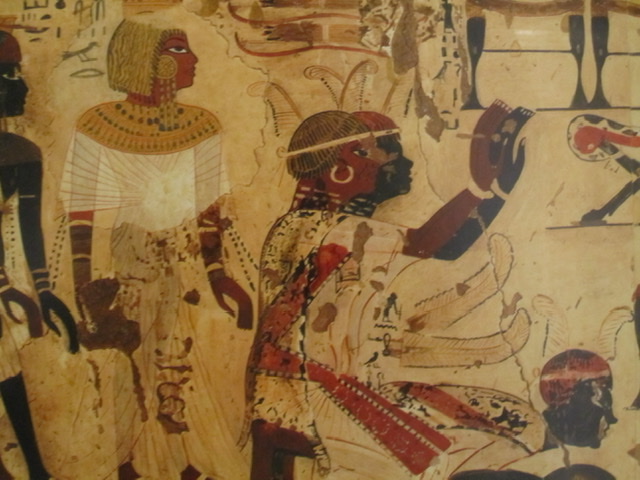
To finish up, I’m going to introduce you to a pair of gods we might somehow know less about than Medjed. Peteese and Pihor were twin brothers, sons of a local Nubian chief, who enjoyed a cult presence in Dendur, which was a temple site just south of Aswan in what was Lower Nubia. Peteese is described as “he whom Isis has given,”while his brother Pihor as “he who belongs to Horus.” We think they lived during the 26th dynasty (c.660s-520s BC), the last Egyptian dynasty to rule before the first Persian invasion of Egypt in 525 BC.

As far as we can tell, what prompted the boys’ elevation to godhood was their joint drowning in the Nile, which is not exactly the heroic exploits of a pair of demigods. When I first read this, I laughed and my husband said something to the effect of, “Well, gee, anyone can do that!” It seemed especially strange for a cult dedicated to what seemed like the gods of poor decision making to have the staying power it did in its little corner of the world. Peteese and Pihor were still being worshipped during the Roman period— in fact, the temple we have of theirs was built by Octavius on the west bank of the Nile and he himself makes offerings to the twins on its walls in the pharaonic guise he wears in Egypt. This is the temple that was moved from Dendur during the construction of the Aswan Dam and reassembled in the Metropolitan Museum of Art in New York City.
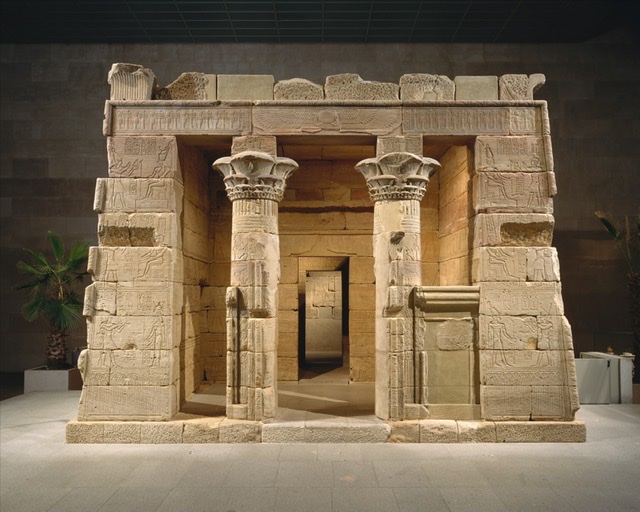
But the more I thought about it, the more I decided that the boys’ longevity pointed more at their father, the unidentified Nubian chieftain, rather than anything they’d ever done. Particularly in the absence of any local tradition (i.e., “the boys died trying to save someone or one another from drowning, or in a river battle”). So, I think it’s likely the chief was powerful enough to promote his sons as divinities and see that their cult thrived, which is no small feat. As I explain in Daughter of Eagles, a god with no one to tend their cult was unlikely to survive the death of the people who decided to make that entity worthy of elevation, so to see Peteese and Pihor hold court through four Egyptian dynasties, two Persian invasions, the arrival of Alexander, the Ptolemies, and finally the Romans, shows that their cult must have had remarkable resilience. More poignantly, it likely demonstrates the genuine grief of a father at the death of two sons, something that was probably a dynastic as well as personal tragedy. The boys’ cult ties to the powerful resurrectionist Osiris-Isis-Horus triad also speaks to hopes of the twins’ divine rebirth into something beyond their unfortunate premature deaths.
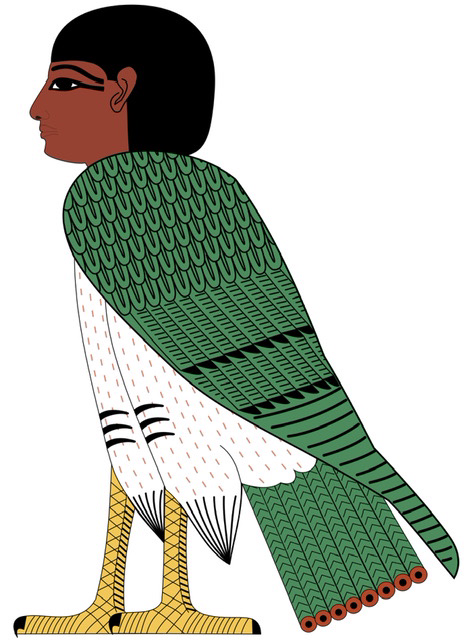
Leave a comment